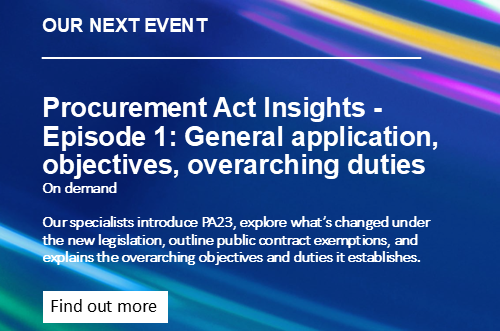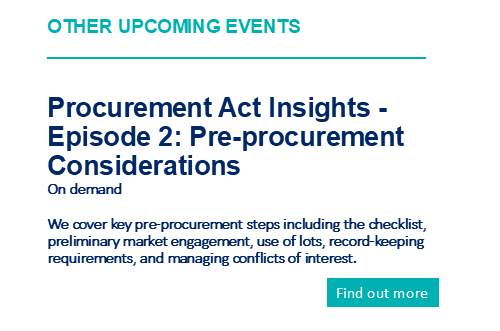- Details
The Pathway to the Future – The Road Map for Employment Tribunals
![]() David Leach discusses and outlines the road map of the planned changes for modernising the Tribunals in 2022 and 2023 released by The Presidents of the Employment Tribunals.
David Leach discusses and outlines the road map of the planned changes for modernising the Tribunals in 2022 and 2023 released by The Presidents of the Employment Tribunals.
The Presidents of the Employment Tribunals have in the last few days released a jointly agreed road map on the planned changes for modernising the Tribunals in 2022 and 2023. It is recommended that all practitioners read this document fully.
The key and in our view interesting points are set out below.
Modernisation and digitisation
A move to a more digital and virtual systems is in the works. The Tribunals have suffered delays and issues with meeting timescales for administration and transfer of documents (such as bundles) due to old and outdated computer system. Due to this HMCTS (Her Majesties’ Courts and Tribunal Services) have commenced their Reform Programme. This is designed to modernise and remove the paper-based systems and have a new digital method for managing cases and documents installed. A fuller outline of the HMCTS plan can be found here
With the introduction of CVP (Cloud Video Platform) to undertake remote virtual hearings being of some notable success there is a drive to keep this going in the future. The aim is still to reduce the overall reliance on CVP and to return to more in-person hearings. Tribunals are to take a pragmatic approach when considering this and it will be based on the resources, nature of the case and lay out of each hearing centre. The Judge will have ultimate decision making when choosing the method of the hearing. Though parties can apply for a change of format if they consider it necessary.
The Road ahead for hearings
In the Road Map the Presidents set out their plans for how they see hearings being conducted. Below is a short view on the general default position for future listed hearings:
- Case Management Hearings – These are to continue being held via CVP or Telephone
- Open Preliminary Hearings (held in public) – when dealing with simple or straightforward matters will still continue to be via CVP. If dealing with more complex issues (such as determining disability) and based on each hearing centres resources, the plan is to move to more in-person hearings.
- Applications for Strike Out or Deposit Orders will continue to default to CVP
- Applications for Interim Relief will still continue to default to CVP
- Short Track Claims (unpaid wages, notice, holiday pay and the like) will, normally continue to default to CVP for their final hearings
- Standard Track Claims (Unfair dismissal), will have some variation. There is preference that these will move to in-person hearings, especially if there will a high quantity of evidence to consider. Though this will vary depending on the hearing centre. With places like London and the South East (which have a high backlog of cases), final hearings will likely default to CVP.
- For Open Track Claims (whistleblowing and discrimination claims), in England and Wales, there will be a greater reliance on video and hybrid style formats at this time.
- There is an aim to move to more in-person hearings but this will very much and depend on the resources of the hearing centres and the nature of the case.
Comment
It will be of great help with the Tribunal’s moving to a more modern digital system to allow a quicker transfer of documents to a hearing centre. The continued use of CVP is centrally a benefit to getting cases before and progressed through the Tribunal, though it is hoped that in complex cases more in-person hearings can take place.
Top Takeaways
Speedier interaction with Tribunal’s on document and case management
Increased variety of hearing formats to allow cases to progress and reduce backlog
Sharpe Pritchard has an experienced team of employment solicitors who regularly advises public sector clients on all manner of contentious and non-contentious employment law matters. Please contact David Leach if you wish to discuss the implications of this article in more detail.
David Leach is an Associate at Sharpe Pritchard LLPFor further insight and resources on local government legal issues from Sharpe Pritchard, please visit the SharpeEdge page by clicking on the banner below.
This article is for general awareness only and does not constitute legal or professional advice. The law may have changed since this page was first published. If you would like further advice and assistance in relation to any issue raised in this article, please contact us by telephone or email
|
Click here to view our archived articles or search below.
|
|
ABOUT SHARPE PRITCHARD
We are a national firm of public law specialists, serving local authorities, other public sector organisations and registered social landlords, as well as commercial clients and the third sector. Our team advises on a wide range of public law matters, spanning electoral law, procurement, construction, infrastructure, data protection and information law, planning and dispute resolution, to name a few key specialisms. All public sector organisations have a route to instruct us through the various frameworks we are appointed to. To find out more about our services, please click here.
|
|
OUR RECENT ARTICLES
December 10, 2025
Sharpe Pritchard appointed to £60m London Boroughs’ Legal Alliance frameworkSharpe Pritchard, one of the UK’s leading public law firms, has been re-appointed to the London Boroughs’ Legal Alliance (LBLA) Solicitors Panel.
November 20, 2025
Strengthening the standards and conduct framework for local authorities in EnglandJames Berry offers his insight into how the proposed changes to standards and conduct rules will affect local authorities.
November 04, 2025
Procuring and operating open frameworks under the Procurement Act 2023Chantelle Pink offers advice to authorities on open frameworks and how to procure them.
October 31, 2025
Building Solar – 5 Top Tips for Solar Farm Construction ContractsSolar farm construction contracts are in focus following fascinating insights into the continuing global uptake and expansion of renewables, and particularly solar, within the 2025 mid-year report of Ember, a global energy think tank.
|
|
OUR KEY LOCAL GOVERNMENT CONTACTS
|
||
|
Partner 020 7406 4600 Find out more |
||
|
Partner 020 7406 4600 Find out more |
||
|
Rachel Murray-Smith Partner 020 7406 4600 Find out more |







 Catherine Newman
Catherine Newman
